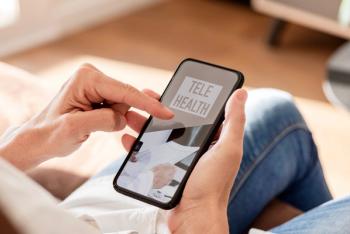
Finding a telemedicine vendor
The pandemic has made telemedicine a necessity, rather than an option.
Due to the Coronavirus pandemic, telehealth for both patients and providers has quickly become a necessity rather than an option. On February 20, 2020, the Federal Government
of the HIPAA regulations associated with using a secure HIPAA telehealth platform for virtual care. Many states have also enacted similar measures as well. One thing they all have in common is that they are a TEMPORARY response related to steps taken during the Coronavirus Pandemic. As many states begin to lift other non-medical COVID-19 orders such as social distancing and closures of businesses and schools, it is expected that these emergency telehealth orders will expire soon. Thus, what was enacted during the emergency, will probably not remain in place after the COVID-19 has come to a solution. For example, in the
and telehealth are set to expire on June 19, 2020. Even with the lifting of these restrictions, it would be naïve for providers to assume that demand by patients for telemedicine will dissipate with the lifting of these emergency orders. PCPs and other healthcare providers should be looking now to understand how they can continue to utilize the implementation of telehealth into their practices. This article will provide suggestions for selecting a secure, HIPAA compliant vendor for a primary care practice.
For those PCPs that have opted to conduct consults over the phone, Skype, FaceTime, and other non-HIPAA Compliant forms for virtual care during the COVID-19 crisis should be planning now on adopting telemedicine into their practices. Patients and providers alike have overcome the most common barrier to telemedicine adoption; they have had a chance to use it and discovered its utility to both providers and to patients. And if the
Trending:
The two major questions that need to be answered
- What does the practice hope to achieve by integrating telemedicine into their practices?
- Who are your patients, and how can they benefit from telemedicine?
These questions require answering or considering before selecting a vendor. A provider cannot expect to select a telemedicine platform and expect it to work "right out of the box." But a practice that takes a time to thoroughly consider these two vital questions will establish the critical foundation of building a successful telemedicine solution that meets the needs of both the provider and the patient.
Self-employed PCPs must think carefully about offering telemedicine, as they generally lack the resources to go the trial and error approach and the finances to survive a failed project. PCPs should not look to replicate the programs used by multi-specialty groups and large health systems; instead, they should look at their patient populations, pick a platform that can be easily moved online (such as non-acute primary care, follow-up visits or medication refills), and match the technology to the needs and wants of both patients and PCPs.
Goals
In developing the Care Services Plan, you should consider the needs identified in the previous step, determine which services will be offered, and how they will be delivered using telemedicine. In this step, you must consider the source of medical services, how those services will be delivered, the location of the providers, the location of the patients, and the guidelines and procedures for delivering these services. This step also includes consideration of telemedicine technology features used in delivering the services, such as the quality of audio and video transmission, special equipment required to view the patient or the equipment to measure certain physiologic parameters such as blood pressure and glucose monitoring and even ultrasound imaging.
In this step, references to technology should be in terms of general features and designs, and not in terms of specific vendors or equipment models. For example, you might state that your practice has a high incidence of patients with congestive heart failure, which indicates the need to measure blood pressure, pulse rate, and body weight in their homes. This will need to be followed by developing protocols that include the referral of the patient by the PCP, the scheduling of the telemedicine examination, communication with the staff at the remote site, and the examination between the patient and the specialist. (Is this what you mean?)
Read More:
Identify Your Patients Who Benefit from Telemedicine
Most PCPs know their patients' needs, but what about healthier patients in your practice who might only require maintenance medication for high blood pressure that is controlled with medication? Is your prescribing pattern to issue a prescription to these patients for months at a time due to the time restraints of the patient? It is common for a provider to want to reduce the inconvenience of their patient from having to take a day off of work or get someone to watch their children so that mom can go to the doctor for a routine medication office follow-up. The result is sporadic office visits at best that are spread out over a period of months between seeing their physician. With telemedicine, the patient can now schedule a time and place to receive their healthcare that is convenient for them. It can be accomplished over their smartphones on their tablet or personal computer, and even in the privacy of their vehicle. This means that those 3-6-month routine office visits can now be conducted monthly by the PCP, and the result is improved patient engagement and, of course, the apparent increase in practice revenue.
Telemedicine is currently a viable option and fills an unmet need for most practicing PCPs-- especially during the COVID-19 pandemic. Patients are going to expect to be able to have a virtual visit with their primary care physicians. Failure to offer this method of communication will result in patients leaving a practice to find PCPs who are able to communicate using telemedicine.
Newsletter
Optimize your practice with the Physicians Practice newsletter, offering management pearls, leadership tips, and business strategies tailored for practice administrators and physicians of any specialty.








